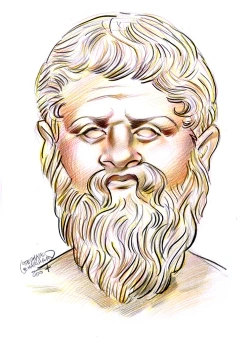131 résultats pour "800"
-
Afrique du Sud.
Drakensberg Steve Vidler/eStock Photo Dans cette même région du Cap, les chaînes montagneuses du Swartberg et du Langeberg s’intercalent entre les Karroo et le Grand Escarpement. Sur la côte méridionale,juste au sud du Cap, se trouve un promontoire isolé, la montagne de la Table (1 086 m d’altitude). À proximité, le cap de Bonne-Espérance, autrefois îlot rocheux,maintenant rattaché au continent, s’élève à 256 m. Ce cap n’est pas très éloigné du cap des Aiguilles qui représente le point le plus m...
-
Afrique du Sud.
l’est du Cap. Drakensberg Steve Vidler/eStock Photo Dans cette même région du Cap, les chaînes montagneuses du Swartberg et du Langeberg s’intercalent entre les Karroo et le Grand Escarpement. Sur la côteméridionale, juste au sud du Cap, se trouve un promontoire isolé, la montagne de la Table (1 086 m d’altitude). À proximité, le cap de Bonne-Espérance, autrefoisîlot rocheux, maintenant rattaché au continent, s’élève à 256 m. Ce cap n’est pas très éloigné du cap des Aiguilles qui représente le p...
-
Erdbeben - geographie.
schwere Beben in England (1318), Neapel (1456) und Lissabon (1531) auf. Das Erdbeben von 1556 in der Provinz Shaanxi (Shensi) in China, bei dem etwa 800 000 Menschen den Tod fanden, war eine der größten Naturkatastrophen in derGeschichte der Menschheit. 1693 kostete ein Erdbeben auf Sizilien schätzungsweise 60 000 Menschen das Leben. Und im frühen 18. Jahrhundert wurde die Stadt Edo (ander Stelle des heutigen Tokyo) zerstört, etwa 200 000 Menschen verloren ihr Leben. 1755 verwüstete ein Beben di...
-
Pays de l'Asie du Sud-Est, au coeur de la péninsule
Indochinoise, la Thaïlande est l'ancien Siam, unifié au XVe siècle à
partir de royaumes thaïs rivaux, imprégné de bouddhisme,
modernisé avec l'aide occidentale au XIXe siècle.
vallée - type de vallée fluviale : la vallée du Mékong, page 5406, volume 10 Thaïlande - le Mékong, à Chiang Khan, page 5158, volume 9 Thaïlande - une rue inondée pendant la mousson, à Chiang Mai, page 5159, volume 9 Les aspects humains. La majorité de la population appartient au groupe thaï, qui occupe densément la plaine centrale. Les hauteurs du Nord et de l'Ouest sont habitées par diverses tribus, notamment les Karens, qui vivent essentiellement d'agriculture sur brûlis ( ray ) et de qu...
-
Occupant le sud-ouest de la péninsule Arabique, le Yémen est
une montagne-refuge d'agriculteurs sédentaires islamisés.
Heureuse ». Quatre régions de hautes terres y sont juxtaposées : les montagnes occidentales, le « Yémen vert », les hauts plateaux centraux et les montagnes orientales. Le bastion montagneux occidental, dénommé Sérat, est la région où se trouvent les plus belles terrasses du Yémen, construites le plus souvent sur des versants aux pentes vertigineuses. Le « Yémen vert », plus au sud, a un relief moins accidenté et moins élevé, et, surtout, bénéficie de précipitations abondant...
-
Bolivia - geografía.
está intentando desplazar a un importante volumen de la población a la zona, lo que aumenta la gravedad del problema medioambiental. Bolivia fue el primer país que ingresó en la modalidad intercambio “deuda por naturaleza”, un tipo de acuerdo que permite a los países en vías de desarrollo pagar deudapública mediante la conservación de la naturaleza. El intercambio afectó a unas 800.000 hectáreas, la mayor parte de selva lluviosa. Bolivia es miembro de tratadosrelativos a biodiversidad, cambio cl...
-
État le plus vaste de la péninsule scandinave, la Suède fut
d'abord le berceau des navigateurs vikings, et subit tardivement
l'influence du christianisme.
mois de l'année dans le nord du pays, et, le long de la côte du golfe de Botnie, la mer est prise par les glaces presque chaque année au nord des îles Åland, ce qui gêne considérablement la navigation. Plus de la moitié du pays est couverte de forêts : forêt d'espèces à feuilles caduques au sud, bientôt remplacée vers le nord par la forêt mixte, puis par les conifères (épicéas, pins, sapins, etc.) lorsque l'été devient trop court, avec moins de cent dix jours à une température moyenne de...
-
Burkina Faso - geographie.
Burkina Faso zählt zu den ärmsten Ländern der Welt. Mehr als die Hälfte der Bevölkerung lebt unterhalb der Armutsgrenze von einem US-Dollar pro Tag. Trotz der kargenBöden des Landes lebt der Großteil der Bevölkerung vor allem in Form von Subsistenzwirtschaft von der Landwirtschaft: Von den 6,47 Millionen Erwerbstätigen (2006) sind92 Prozent in der Landwirtschaft beschäftigt. Ein Teil der Erwerbstätigen geht als Saisonarbeiter ins nähere Ausland, insbesondere in die Republik Elfenbeinküste. DieLa...
-
-
Sierra Leone (country) - country.
commodities such as palm oil, palm kernels, coffee, cacao, ginger, kola nuts, and piassava (palm fibers) are grown for export. Cattle, goats, and sheep are raised, andthe fishing industry is of increasing importance. B Mining Gem and industrial diamonds are the leading mineral products of Sierra Leone. In 2004, 309,390 carats of gem-quality diamonds were produced. Rutile, a titanium oreof which Sierra Leone has one of the world’s largest deposits, and bauxite are also mined in large quantities....
-
Republik Kongo - geographie.
5.4 Politik Die größten der etwa 240 zugelassenen Parteien sind die ehemals marxistische Einheitspartei Parti Congolais du Travail (PCT), der Rassemblement pour la Démocratie et le Progrès Social (RDPS), die Union pour la Démocratie et la République (UDR) und die Union Panafricaine pour la Démocratie Sociale (UPADS). 5.5 Verteidigung Die Streitkräfte der Republik Kongo umfassen das Heer aus 12 000 Berufssoldaten, die Luftwaffe mit 1 200 Mann und die Seestreitkraft mit 800 Mann. Zu den...
-
River.
IV RIVER PATTERNS River patterns, or general shapes, depend on the geologic zone and the climate of the location. There are four river patterns: meandering, braided, anastomosing, andstraight. A meandering pattern follows a winding, turning course. A braided pattern has connected channels that resemble a hair braid. An anastomosing river patterncombines features of the meandering and braided patterns. Some river patterns are simply straight channels. Meandering and braided are the most common...
-
River - Geography.
IV RIVER PATTERNS River patterns, or general shapes, depend on the geologic zone and the climate of the location. There are four river patterns: meandering, braided, anastomosing, andstraight. A meandering pattern follows a winding, turning course. A braided pattern has connected channels that resemble a hair braid. An anastomosing river patterncombines features of the meandering and braided patterns. Some river patterns are simply straight channels. Meandering and braided are the most common...
-
Mittelalter - Geschichte.
dominierten römischen Kirche. Das Papsttum, das in der Zeit der Machtlosigkeit des byzantinischen Kaisers in Italien bereits zu einer der führenden politischen Mächteaufgestiegen war, beanspruchte, da von Petrus gegründet, gegenüber allen anderen Kirchen den Vorrang. Es emanzipierte sich endgültig vom byzantinischen Kaiser, alsPapst Zacharias 751 die Errichtung der karolingischen Monarchie durch Pippin III. legitimierte, dem sein Nachfolger zudem den Schutz der römischen Kirche übertrug. Dieswar...
-
Venezuela - country.
Venezuela has six navigable rivers. Of the thousand or more streams in the country, the majority flow into the Orinoco. The Orinoco flows east across central Venezuelaand drains approximately four-fifths of the total area of the country. With the tributaries—the Apure, Meta, and Negro rivers—it forms the outlet into the Atlantic Oceanfor the waters of much of the interior of Colombia, as well as of inland Venezuela. F Climate The climate of Venezuela is tropical on the Llanos and along the coas...
-
British Columbia - Geography.
hemlock, Douglas fir, Sitka spruce, and various cedars, grows rapidly in the mild, wet climate and produces the largest trees in Canada. In the dry lowlands of thesouthern and central interior, ponderosa and lodgepole pines, aspen, and bunchgrass are characteristic. Spruce dominates the Prince George region. Prairie grasses andstands of aspen are found in the northeastern corner of the province. At elevations higher than about 1,800 m (about 6,000 ft), an alpine vegetation of shrubs, mosses,and...
-
British Columbia - Canadian History.
hemlock, Douglas fir, Sitka spruce, and various cedars, grows rapidly in the mild, wet climate and produces the largest trees in Canada. In the dry lowlands of thesouthern and central interior, ponderosa and lodgepole pines, aspen, and bunchgrass are characteristic. Spruce dominates the Prince George region. Prairie grasses andstands of aspen are found in the northeastern corner of the province. At elevations higher than about 1,800 m (about 6,000 ft), an alpine vegetation of shrubs, mosses,and...
-
-
London (England) - geography.
In the northern part of the West End is Bloomsbury, the city’s traditional intellectual center, with its concentration of bookshops and homes of writers and academics. Inthe early 20th century a number of famous writers, critics, and artists who lived here became known as the Bloomsbury Group. Here, too, is the British Museum, one ofLondon’s chief tourist attractions. Nearby is the giant complex of the University of London, whose various colleges and departments have taken over much ofBloomsbury...
-
Greece - country.
minerals, such as chromium, copper, uranium, and magnesium, are relatively small. Greece’s small petroleum deposits, located under the Aegean Sea near the island ofThásos, are rapidly being depleted. There are no significant reserves of natural gas. Greece’s forests, probably abundant in ancient times, have been significantly depleted. Subsequent soil erosion has made reforestation efforts difficult. Although muchof Greece’s soil is rocky and dry, the country’s mountains are interspersed with sm...
-
New Jersey - geography.
C Soils Broadly defined, all of New Jersey’s soils are podzolic soils; that is, they are acidic and contain fairly high amounts of iron oxides. The soils in northern New Jersey areirregular in quality and contain rock fragments and small stones deposited by the continental glaciers of the last Ice Age. The soils of the inner coastal plain, unaffectedby glaciation, are the richest in the state, while those of the outer coastal plain are generally infertile. The newer soil classification system d...
-
New Jersey - USA History.
C Soils Broadly defined, all of New Jersey’s soils are podzolic soils; that is, they are acidic and contain fairly high amounts of iron oxides. The soils in northern New Jersey areirregular in quality and contain rock fragments and small stones deposited by the continental glaciers of the last Ice Age. The soils of the inner coastal plain, unaffectedby glaciation, are the richest in the state, while those of the outer coastal plain are generally infertile. The newer soil classification system d...
-
Vietnam War.
rigged, since about 150,000 more people voted in Saigon than were registered. Diem then deposed Bao Dai, who had been the only other candidate, and declaredSouth Vietnam to be an independent nation called the Republic of Vietnam (RVN), with himself as president and Saigon as its capital. Vietnamese Communists and manynon-Communist Vietnamese nationalists saw the creation of the RVN as an effort by the United States to interfere with the independence promised at Geneva. III THE BEGINNING OF THE...
-
Vietnam War - History.
rigged, since about 150,000 more people voted in Saigon than were registered. Diem then deposed Bao Dai, who had been the only other candidate, and declaredSouth Vietnam to be an independent nation called the Republic of Vietnam (RVN), with himself as president and Saigon as its capital. Vietnamese Communists and manynon-Communist Vietnamese nationalists saw the creation of the RVN as an effort by the United States to interfere with the independence promised at Geneva. III THE BEGINNING OF THE...
-
Vietnam War - U.
rigged, since about 150,000 more people voted in Saigon than were registered. Diem then deposed Bao Dai, who had been the only other candidate, and declaredSouth Vietnam to be an independent nation called the Republic of Vietnam (RVN), with himself as president and Saigon as its capital. Vietnamese Communists and manynon-Communist Vietnamese nationalists saw the creation of the RVN as an effort by the United States to interfere with the independence promised at Geneva. III THE BEGINNING OF THE...
-
West Virginia - geography.
Forests, mostly of hardwood varieties, cover 79 percent of West Virginia. The principal commercial species are the oak, yellow poplar, maple, birch, beech, black walnut,hickory, and gum. Softwoods include pines and hemlock firs. Flowering trees include the wild crab apple, dogwood, hawthorn, and redbud. Among the many floweringbushes and plants are the rhododendron, which is the state flower, the laurel, blueberry, hepatica, wild geranium, and black-eyed Susan. Insects and disease, mostly introd...
-
-
West Virginia - USA History.
Forests, mostly of hardwood varieties, cover 79 percent of West Virginia. The principal commercial species are the oak, yellow poplar, maple, birch, beech, black walnut,hickory, and gum. Softwoods include pines and hemlock firs. Flowering trees include the wild crab apple, dogwood, hawthorn, and redbud. Among the many floweringbushes and plants are the rhododendron, which is the state flower, the laurel, blueberry, hepatica, wild geranium, and black-eyed Susan. Insects and disease, mostly introd...
-
Wyoming (state) - geography.
The basins, which lie in the rain shadow of mountains, are very dry, with an average annual precipitation of about 250 mm (about 10 in) or less; the Great Plains regionhas an annual average of about 380 mm (about 15 in), and the Black Hills region receives slightly more. Thunderstorms and hailstorms are relatively frequent insummer. The annual snowfall ranges from about 500 mm (about 20 in) in the Bighorn Basin to well over 5,100 mm (over 200 in) in the higher mountains, where annualprecipitatio...
-
Wyoming (state) - USA History.
The basins, which lie in the rain shadow of mountains, are very dry, with an average annual precipitation of about 250 mm (about 10 in) or less; the Great Plains regionhas an annual average of about 380 mm (about 15 in), and the Black Hills region receives slightly more. Thunderstorms and hailstorms are relatively frequent insummer. The annual snowfall ranges from about 500 mm (about 20 in) in the Bighorn Basin to well over 5,100 mm (over 200 in) in the higher mountains, where annualprecipitatio...
-
Georgia (state) - geography.
B Rivers and Lakes Most of the rivers of Georgia drain eastward to the Atlantic Ocean proper or southward to the Gulf of Mexico. Only a few flow northward to the Tennessee River, which isa major tributary of the Mississippi River. Most of the rivers flowing to the coasts are navigable by barges and small craft as far upstream as the Fall Line. The major river flowing to the Atlantic is the Savannah River, which, with the Tugaloo River, one of its headwaters, forms most of the state’s eastern bo...
-
Georgia (state) - USA History.
B Rivers and Lakes Most of the rivers of Georgia drain eastward to the Atlantic Ocean proper or southward to the Gulf of Mexico. Only a few flow northward to the Tennessee River, which isa major tributary of the Mississippi River. Most of the rivers flowing to the coasts are navigable by barges and small craft as far upstream as the Fall Line. The major river flowing to the Atlantic is the Savannah River, which, with the Tugaloo River, one of its headwaters, forms most of the state’s eastern bo...
-
Hawaii (state) - geography.
limestone along the coast. The volcanoes of the Hawaiian Islands are all so-called shield volcanoes, or lava domes. Unlike the volcanoes of Alaska and South America, those of Hawaii were notcreated by very explosive eruptions. Formed mostly by lava flows, they are great rounded mountain masses, rather than steep-sided cones. Mauna Kea, dormant forcenturies, is the highest mountain in the state. It rises to 4,205 m (13,796 ft) above sea level, and its summit is dotted with cinder cones formed by...
-
Hawaii (state) - USA History.
limestone along the coast. The volcanoes of the Hawaiian Islands are all so-called shield volcanoes, or lava domes. Unlike the volcanoes of Alaska and South America, those of Hawaii were notcreated by very explosive eruptions. Formed mostly by lava flows, they are great rounded mountain masses, rather than steep-sided cones. Mauna Kea, dormant forcenturies, is the highest mountain in the state. It rises to 4,205 m (13,796 ft) above sea level, and its summit is dotted with cinder cones formed by...
}})








